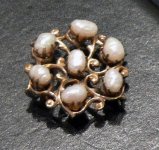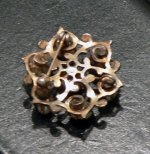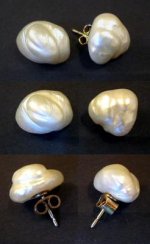claudenancy
New Member
- Joined
- Jul 2, 2008
- Messages
- 246
Hi all: Today I was shown a collection of jewelry that antique dealers who are friends of a friend are selling.
THey had some very nice pieces. One object was a pin with small pearls. They have evaluated the metal work on the pin as 18th century. If this is the case and if the pearls are contemporary to the metal work, then the pearls would be natural. They snapped some photographs of the pin.
I know that no definite conclusions can be drawn from photographs, but I was curious if anyone had any educated guesses as to whether the pearls look like they are original to the brooch, and if so, what kind of pearls are they?
Just wondering, thanks for your expertise.
Regards, Beth
THey had some very nice pieces. One object was a pin with small pearls. They have evaluated the metal work on the pin as 18th century. If this is the case and if the pearls are contemporary to the metal work, then the pearls would be natural. They snapped some photographs of the pin.
I know that no definite conclusions can be drawn from photographs, but I was curious if anyone had any educated guesses as to whether the pearls look like they are original to the brooch, and if so, what kind of pearls are they?
Just wondering, thanks for your expertise.
Regards, Beth



